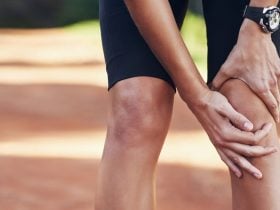Pain and tenderness around the upper thigh’s outer curve may be a significant sign of hip bursitis. Typically, it occurs when the large bursa present in the bony knob close to the femur (top of the thigh bone) becomes inflamed. [1] Please note that a bursa is a fluid-filled sac that acts as a gliding surface to effectively lower friction between the moving body tissues.
Non-infectious bursitis can be treated by rest, ice, and medications that help inflammation and pain. The frequent and continuous pounding movement of the running stride may lead to wear on the hip joints in later years, especially for individuals that don’t exercise or have good habits. However, some specific stretches and exercises can help with the wear and tear that causes hip bursitis.
It’s crucial to keep the muscular foundation of the thighs. An individual with a strong muscular base to support the upper body and hips helps perform movements with fewer traumas from the joints. The main idea for these exercises is to recruit muscles to stabilize the human hips instead of making them experience unpleasant movements. Strength training is the most crucial thing when dealing with helping bursitis pain.
Here are the exercises and stretches that are crucial in helping hip bursitis:
Lying Lateral Leg Raises

This specific exercise helps strengthen and develop the tensor fasciae latae and the iliotibial band, which extends down to the upper leg’s outer side. Moreover, the side-to-side movement depends on the vascular band.
The band often gets ignored in a running routine because the running stride is primarily forward and backward. For this reason, it’s essential to take time to enhance the stability and strength it offers. In performing the lying lateral leg raises, there is no need for equipment. Aside from the TFL (tensor fasciae latae) and the ITB (iliotibial), the other muscles worked include the gluteus minimus, gluteus maximus, and the quadriceps.
Here are the steps to follow in performing the lying lateral leg raises:
-
Lay down on the right side of the body with the right arm stretched out for the sake of balance.
-
Raise the leg as far as possible and try to get to the highest possible range of motion
-
It’s crucial to bring the left leg back down in a controlled motion to fall in line with the right leg.
-
Complete the rest of the fifteen reps with the same leg and turn to the left leg and perform fifteen reps as well
-
Complete three sets of 15 reps on each of the legs
A crucial point to note is that lying on the side tends to irritate the hip bursitis. Hence, individuals who experience this irritation need to use foam, mat, or pillow between the ground and the hip joint. Individuals that still find it irritating when there is an obstacle between the hip joint and the floor should perform the exercise standing.













